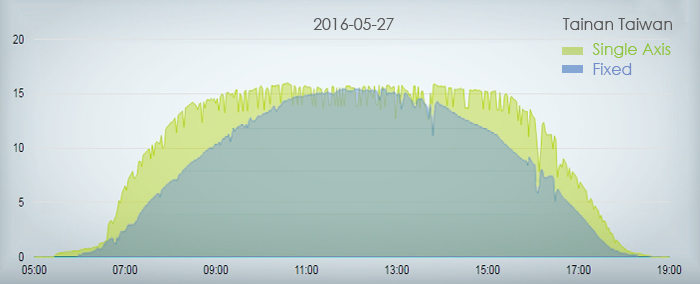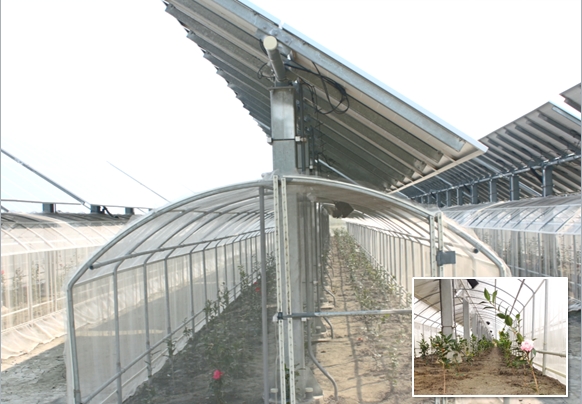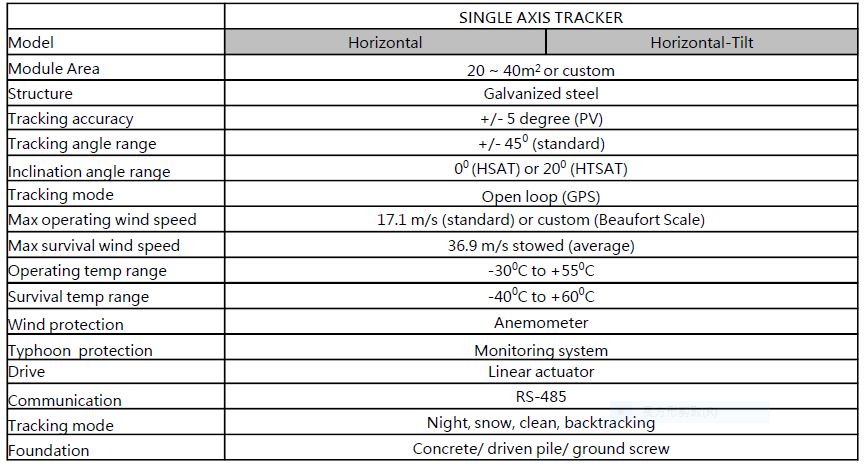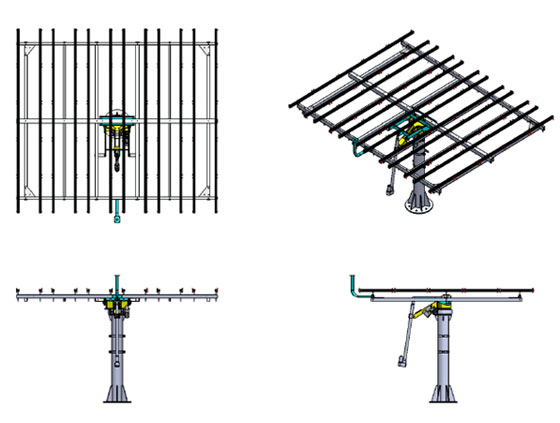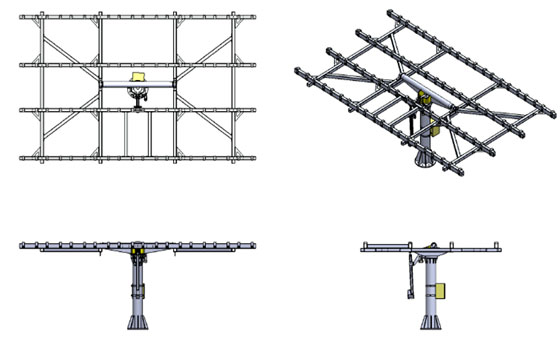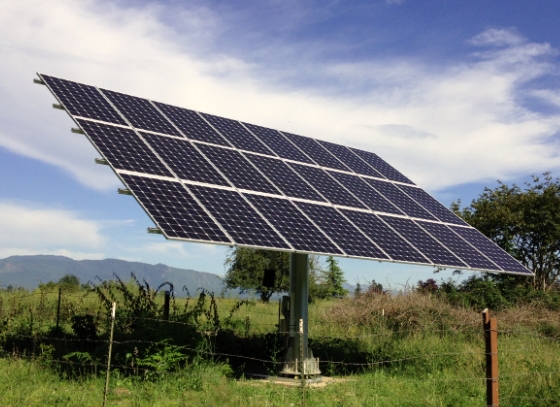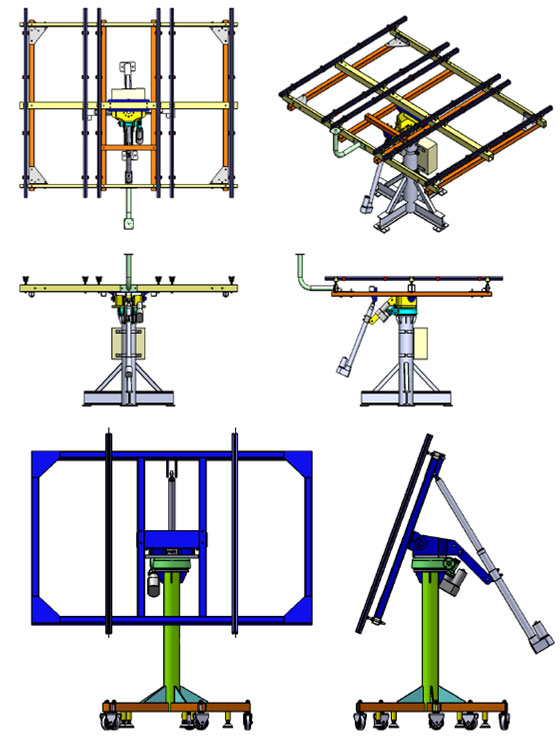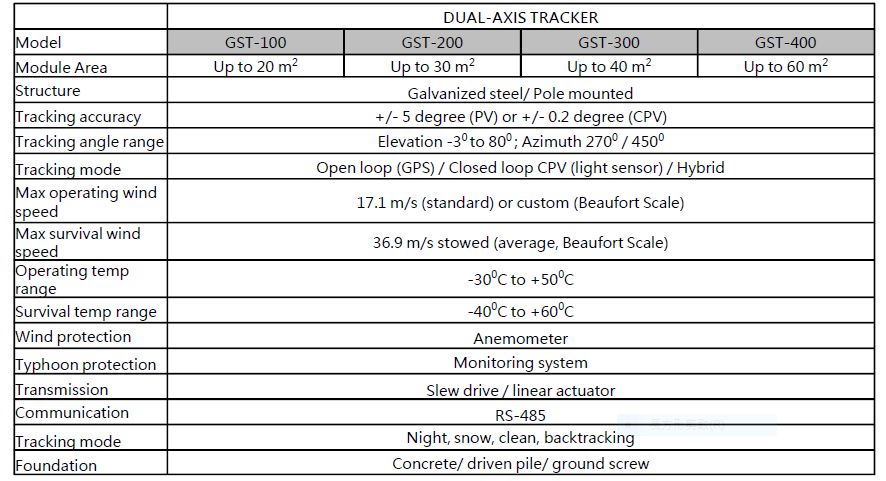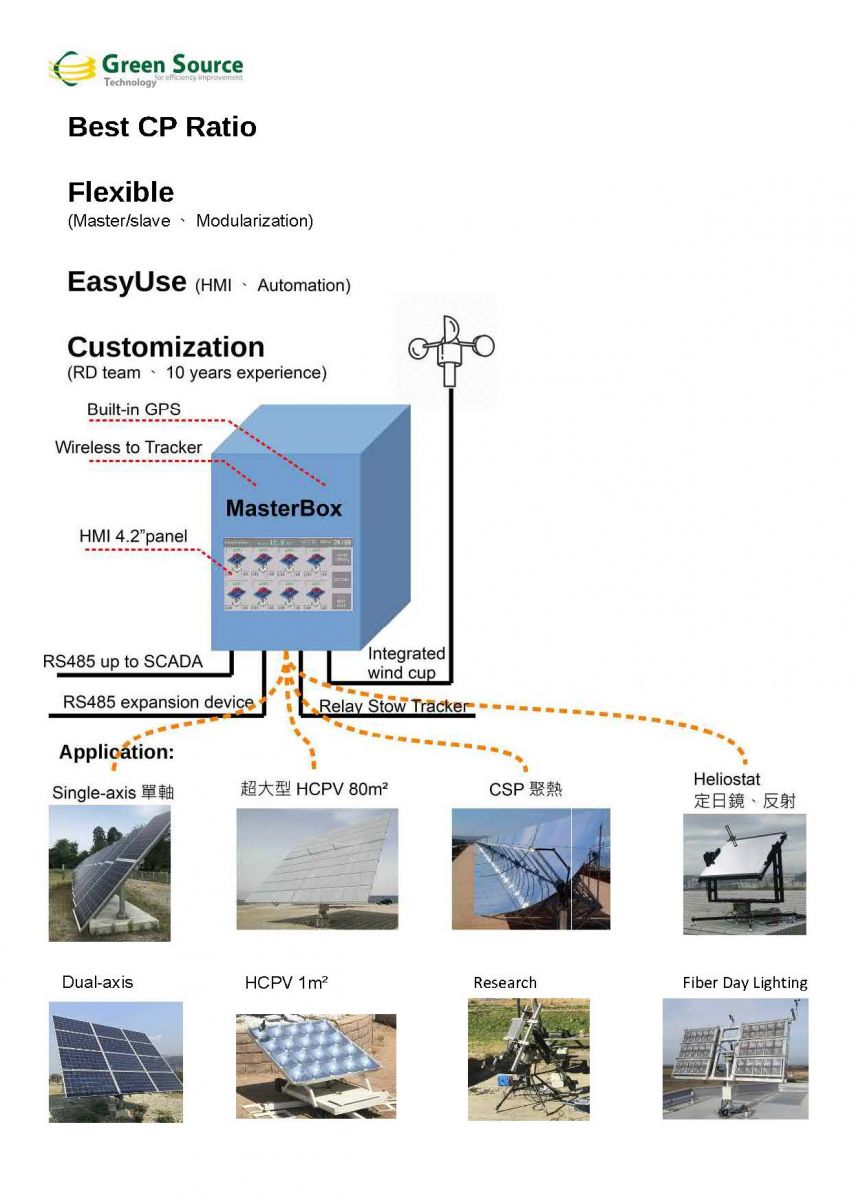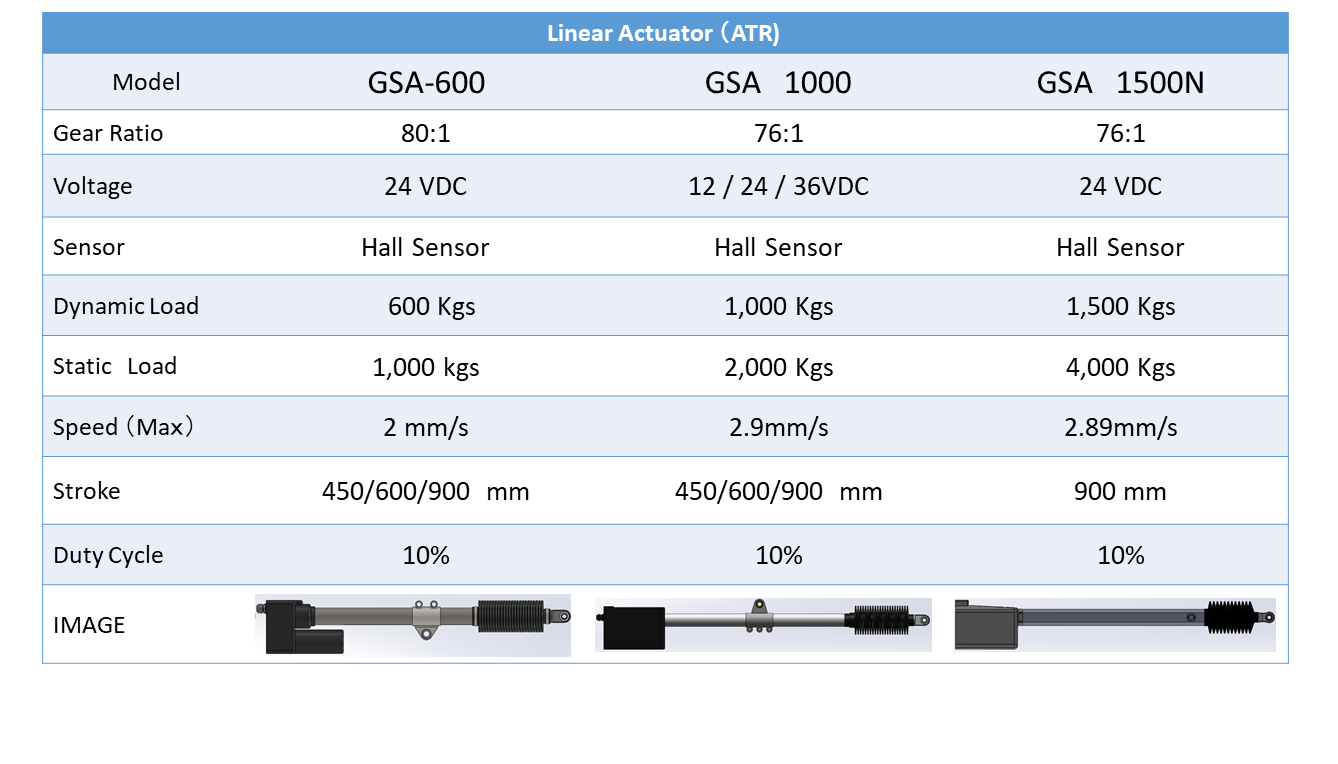|
Tracker is the Best Solution to increase power generation for solar energy. Power generation can be increased by 15% to 45% according to different longitude, latitude, and climate conditions. Generally, the Horizontal Single Axis Tracking system ( HSAT ) is suitable for low latitudes. In high latitudes, the Horizontal Tilted Single Axis Tracking system ( HTSAT ) and Dual Axis Tracking system ( DAT ) are ideal. In the same location, single axis trackers can increase power generation by 15% to 25%, and for dual axis trackers power generation can increase up to 45%.
|
|
|
|
Single Axis Tracking System For most PV power plants, the Single Axis Tracker is the top pick due to its cost performance ratio. Compared to the fixed system there is about a 10% additional cost, but a 10% to 25% increase of power generation. Thus, the Internal Rate of Return is a benefit. When selecting a solar system, there are three basic categories to consider: the product cost, the installation cost, and the cost of 20 years of maintenance. According to American EPC companies such as SunPower, First Solar and others, there is an additional 10% maintenance cost for tracking systems compared to fixed systems. The benefits of trackers for investors should make them the preferred choice. |
|
|
|
Main characteristics of GST's Single Axis Tracker are: • Structural designs with hot dip galvanized steel within a tracking system composed of a linear actuator, distant remote hybrid controller, and anemometer resisting frequent typhoons in Taiwan • North south arrays, 45 degree tracking east west • Back-tracking feature • One controller commanding 12 trackers with a quick installation program • Low power consumption with just 0.02 kWh per day per tracking array • 485 communication features to properly relay system warning or error messages • 50 years of structural design that meet local building standard requirements • Safety mode for high winds and typhoons • System base built with optional driven pile, premade concrete pile, or onsite pulled concrete block |
|
Dual Axis Tracking System (DAT)
|
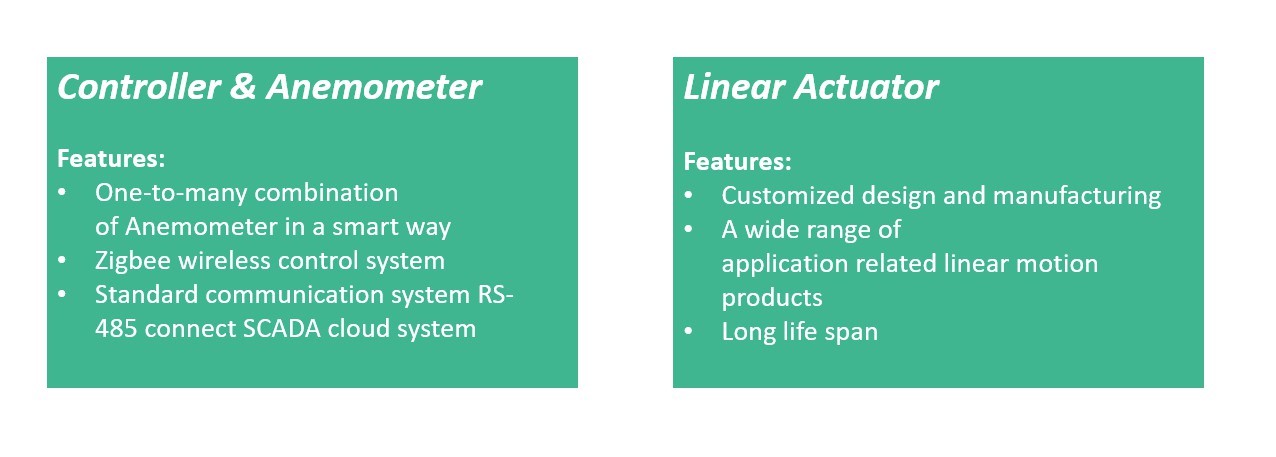
|
|
|

